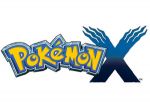Pokemon: Top Five of the Game Series

The world of modern gaming did not arrive as a complete package -- it may be a bit difficult for gamers who are new to that environment to grasp, but the instant connectivity and network-based co-operative play that we enjoy today were the process of a long period during which those capabilities evolved from a very crude peer-to-peer wired connection to the wide-open Internet-based structure we enjoy today.
While there are many examples of the developing tech that we can point to, the first meaningful example comes from a surprising source: Nintendo's handheld gaming consoles of the Game Boy line, and the massively popular exclusive title Pokemon.
It does not seem possible that anybody reading this could not be familiar with both the game series and the animated TV show it spawned, or the story behind its creation -- it is possible.
Originally launched in Japan as Pocket Monsters, the title was later changed to a portmanteau of the two words - POCKEt and MONster - under the presumption that this was more likely to catch on with Western gamers.The games were created by games journo and designer Satoshi Tajiri and developed by his company, GameFreak to provide a mixed experience of solid JRPG play with two-player co-op intended to have a very addictive element.
While the origins of both GameFreak and Pokemon have a rather complicated story, in the interest of moving this along rapidly we will simply say that the basis for the games (and the multimedia empire that followed) was found in the childhood fascination of its creator for collecting insects, and the imaginary adventures that he had in battling them.
Published by Nintendo exclusively for its Game Boy platforms, the games were destined to change the face of portable gaming as well as to redefine interactive multi-player play on portable game console platforms.
A New Empire
The original game -- Pocket Monsters: Green -- was first released in 1996 in Japan for the Game Boy, for the most part following a well-established theme of the Japanese role-playing video games (JRPG).
The sudden massive popularity of the game in Japan caught both its creator and publisher by surprise - in fact it is fair to say that pretty much everyone involved in creating Pocket Monsters: Green was shocked at not just how popular it rapidly grew, but more so by the diversity of its growing fan base, which was not restricted to the teen and younger set at which it had been marketed.
Adults were playing the game, and not only playing it but enthusiastically so.
The plan to release the game as a two-color complimentary set with the battle cable to link the games for having multi-player battles established, the re-release of the original Green as Pokemon: Blue and its complimentary partner title, Pokemon: Red set history on course.
The basic premise of the games is simple: in each title and generation, each game is structured with a two-color complimentary pairing, with each having Pokemon that are exclusive to it.
After a suitable amount of time in release has passed, a third “joining” title is released that offers the contents of both of the previous titles in one.
Each game tells the same basic story: a young (originally an 11-year-old but in recent generations a teenaged character) Pokemon enthusiast sets out on the traditional adventure of becoming a Pokemon Trainer in which a series of special badges are sought from the Pokemon Gyms in the region.
As part of that journey the new Trainer agrees to assist the Pokemon Professor in competing their Pokedex. The Pokedex is an encyclopedia of information that documents all of the Pokemon in the region, which generally includes a mix of known Pokemon from other regions and entirely new species and even types exclusive to that region.
In the process of undertaking this traditional journey and adventure, the Trainer ends up involved in a series of adventures that make up the story-mode of game play. This usually involves a nefarious criminal organization made up of darkside Pokemon Trainers who have some plan to take over the world or dominate Pokemon (or both).
While the first four generations of the game largely were restricted to linked battles, the development of later generations of handheld consoles includes Internet connectivity for a multitude of different battle types and opponents, as well as a deep trading system that makes it truly possible to collect 'em all if not catch 'em all!
That nicely wraps up the basic summary of what is arguably the second best selling video game franchise worldwide (second only to Nintendo's own Mario franchise), which means you now know all that you need to know if you were not previously familiar with the series to appreciate what comes next.
Top Five of the Game Series: Pokemon
This next feature article in our new 'Top Five of the Series' line takes on the incredibly popular game series Pokemon.
In addition to being a popular game series and multimedia empire, the games in the series also enjoy the reputation of being a source of a significant number of firsts in handheld portable gaming -- having helped to introduce a feature that would later become industry standard across all genres. It was not peer-to-peer player-versus-player gaming -- that already existed. It was something different -- and very important.
While the games leveraged the same basic ideas used for competitive play in linking consoles, the important difference was that, for the first time, in addition to allowing players to pit their digital pets against another players pets, the link also allowed the players to trade pets -- and objects -- between their games.
The underlying theme in this new line is to celebrate the best five games of a long-running video game series, but not using the usual criteria that most Top X lists use. We could do that in what? Eight paragraphs or so? We could, but it would hardly be interesting to you, our readers, who we know want to be entertained when you read about the best of the best in a series.
Just to be clear here, while celebrating the best of the best of a series is the point to this new line of feature pieces, we also mean to encourage gamers to re-discover older titles and, even more gratifying, discover these titles for the first time if you were not an active member of the gaming community during their glory days!
So with that in mind, here are the Top Five of the Series for Pokemon.


1[video][b][/b] [/video]
OK so wow! Good points there! And wow! Strong feelings there!
A lot of this is subjective - obviously - we all are going to like what we like. Personally I found X and Y to be the best yet for me. YMMV
it is confusing to me. you said gen 3 was better than gen 4 then you said said gen 4 was better than all other generations
sorry but x and y were not the best. the problems i had with it were
1. a lot of the pokemon seemed uninspired, i mean really? a key and some diamond rock?
2. the bad guys are so bland and uninteresting, even the main villain lost my interest the first time i seen him
3. the map is huge yet there was very little to do, especially post game, which has been a problem for most games, but at least black and white made an effort with the other half of the island and gold/silver/crystal/heartgold/soulsilver showd that there can be a better post game.
5. why are we getting more friends to go with yet not one decent rival anymore? blue and silver were the best rivals simply because you wanted to beat them to make them suffer, nowadays its like our rivals have to be our friends and it makes it less appealing to beat them
6. mega evolution has no use, if you use it online its a cheap win, if you use it in the game its simply for overkill. it may look cool, but what use is there?
They say that there will be a remake for ruby,sapphire and emerald.
I'm still playing them on my gameboy. Everything after pearl was really trashy
This list is right. No need for Ruby or Sapphire when you have Emerald!
Crystal > Every other Pokemon Game
Gen 2 > Gen 1 > Gen 3 > Gen 4 > All other generations
Here is the new list
what about ruby or saphire????
Good list, very good list! : )